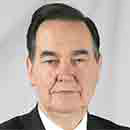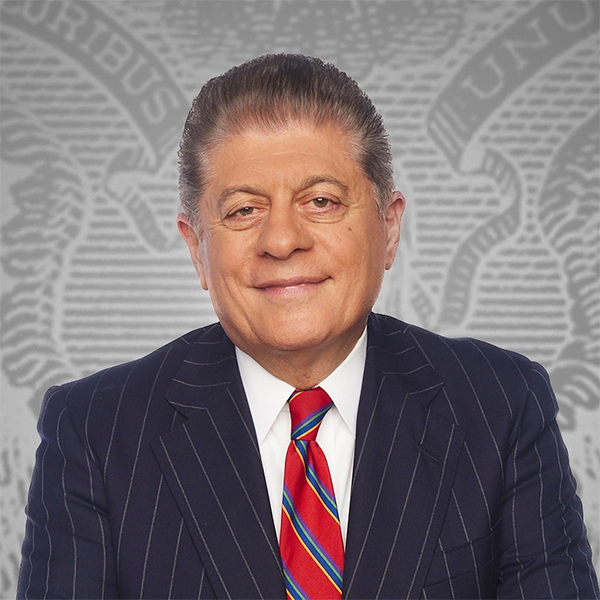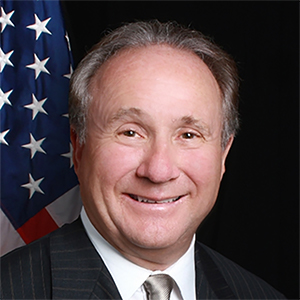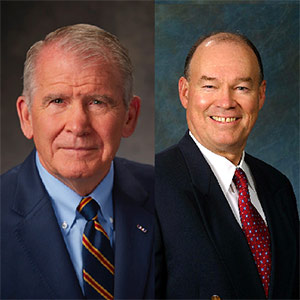Trump’s threats on Greenland, Gaza, Ukraine and Panama revive old-school US imperialism of dominating other nations by force, after decades of nuclear deterrence
Published in Political News
Imperialist rhetoric is becoming a mark of President Donald Trump’s second term. From asserting that the U.S. will “take over” the Gaza Strip, Greenland and the Panama Canal to apparently siding with Russia in its war on Ukraine, Trump’s comments suggest a return to an old imperialist style of forcing foreign lands under American control.
Imperialism is when a nation extends its power through territorial acquisition, economic dominance or political influence. Historically, imperialist leaders have used military conquest, economic coercion or diplomatic pressure to expand their dominions, and justified their foreign incursions as civilizing missions, economic opportunities or national security imperatives.
The term “empire” often evokes the Romans, the Mughals or the British, but the U.S. is an imperial power, too. In the 19th and early 20th century, American presidents expanded U.S. territory westward across the continent and, later, overseas, acquiring Puerto Rico and other Caribbean islands, Guam and the Philippines.
After that, outright territorial conquest mostly ceased, but the U.S. did not give up imperialism. As I trace in my 2023 book, “Dying by the Sword,” the country instead embraced a subtler, more strategic kind of expansionism. In this veiled imperialism, the U.S. exerted its global influence through economic, political and threatened military means, not direct confrontation.
Embracing traditional U.S. imperialism would upend the rules that have kept the globe relatively stable since World War II. As an expert on U.S. foreign policy, I fear that would unleash fear, chaos – and possibly nuclear war.
One of the most fundamental principles of this post-war international system is the concept of sovereignty – the idea that a nation’s borders should remain intact.
The United Nations Charter, signed in San Francisco in 1945, explicitly bars countries from obtaining territory through force. Outright annexation or territorial takeover is considered a direct violation of international law.
Work by the late political scientist Mark Zacher outlines how, since World War II, the international community – including the U.S. – has largely upheld this standard.
But imperialism still shapes world politics.
Russian President Vladimir Putin’s full-scale invasion of Ukraine in 2022 is a blatant instance of imperial ambition justified by alleged historical grievances and national security concerns. Russia’s invasion set a dangerous precedent by undermining the principle that borders can’t be changed by force and that countries shouldn’t resort to aggression.
Putin’s precedent, in turn, has raised concerns that another great power may attempt to forcibly redraw international borders.
Take China, for example. President Xi Jinping has become increasingly aggressive toward Taiwan since 2019. If Putin’s invasion culminates with Russia successfully annexing parts of Ukraine – which the Trump administration has agreed with Russia should be part of any settlement – Xi may follow through on his threats to invade Taiwan.
Respect for national sovereignty has made the world more stable and less violent.
The decline of traditional imperialism after World War II led to a flourishing of independent nation-states. As former colonial powers gradually relinquished control of their holdings in the second half of the 20th century – voluntarily or after losing wars of independence – the number of sovereign countries increased dramatically. The U.N. had 51 member countries in 1945 and over 150 by 1970.
The U.N. was founded on the idea that people of all countries should have a say in how they build their own futures. Today, 197 countries try to work together through the U.N. on a wide range of global issues, including defending human rights and reducing global poverty.
When a major power like the U.S. openly embraces imperialist rhetoric, it further weakens the already fragile rules that keep this delicate collaboration working.
Imperialism does not require military force. Great powers still exert influence over weaker nations, shaping their behavior through economic might and wealth, diplomacy and strategic alliances.
The U.S. has long engaged in this form of influence. It has often pursued its imperialist agenda in what I would call a more “gentlemanly manner” than historical empires with their bloody physical conquests.
During the Cold War, for example, the U.S. established extensive dominance over much of the globe. In Latin America and the Middle East, it used economic aid, military alliances and ideological persuasion rather than outright territorial expansion to exert its control. Russia did the same in Eastern Europe and its other spheres of influence.
Today, China excels at nonviolent imperialism. Its Belt and Road Initiative, a global infrastructure construction project launched in 2013, has created deep economic dependencies among partner nations in Africa, South Asia and Latin America. Trade and diplomatic ties between China and those regions are much closer today as a result.
A critical distinction between imperialism past and present is the presence of nuclear weapons.
In previous eras, great powers frequently fought wars to expand their influence and settle disputes. Countries could attempt to seize territory with little risk to their survival, even in defeat.
The sheer destructive potential of nuclear arsenals has changed this calculus. The Cold War doctrine of mutually assured destruction guarantees that if one country launches a nuclear weapon, it will quickly become the target of nuclear counterattack: annihilation for all sides.
Any major war between nuclear-armed nations now carries the risk of massive, potentially planetary, destruction. This makes direct conquest an irrational, even suicidal strategy rather than a calculated political maneuver.
And it makes Trump’s old-school imperial rhetoric particularly dangerous.
If the U.S. tried to annex foreign territory, it would almost certainly provoke serious international conflict. That’s especially true of the most strategic places Trump has threatened to “take over,” like the Panama Canal, which links 1,920 ports across 170 countries.
These imperialist threats, even if they’re not intended as serious policy proposals, are already ratcheting up global tensions.
Panamanian President José Raúl Mulino — a pro-American ally — has flatly ruled out negotiating with the U.S. over control of the Panama Canal. Denmark’s prime minister, Mette Frederiksen, says its territory of Greenland is “not for sale.” And Palestinians in Gaza, for their part, fiercely reject Trump’s plan to move all of them out and turn their homeland into a “Middle East Riviera,” as have neighboring Arab countries, which could be expected to absorb millions of displaced Palestinians.
Rhetoric shapes perception, and perception influences behavior. When an American president floats acquiring foreign territories as a viable policy option, it signals to both allies and enemies that the U.S. is no longer committed to the international order that has achieved relative global stability for the past 75 years.
With wars raging in the Middle East and Europe, this is a risky time for reckless rhetoric.
This article is republished from The Conversation, a nonprofit, independent news organization bringing you facts and trustworthy analysis to help you make sense of our complex world. It was written by: Monica Duffy Toft, Tufts University
Read more:
Most of the world has long feared US power. Now its allies do too.
Trump’s Greenland bid is really about control of the Arctic and the coming battle with China
Palestinians have long resisted resettlement – Trump’s plan to ‘clean out’ Gaza won’t change that
Monica Duffy Toft does not work for, consult, own shares in or receive funding from any company or organization that would benefit from this article, and has disclosed no relevant affiliations beyond their academic appointment.





























































Comments